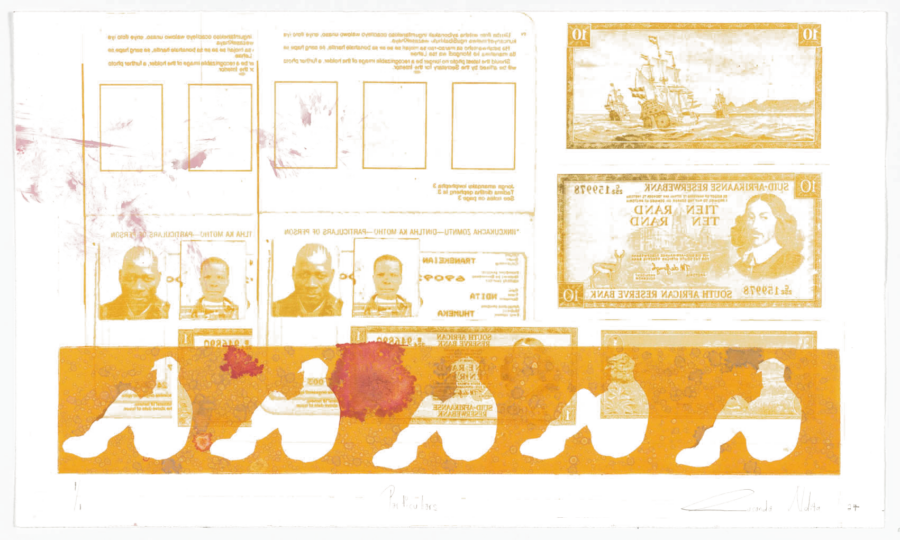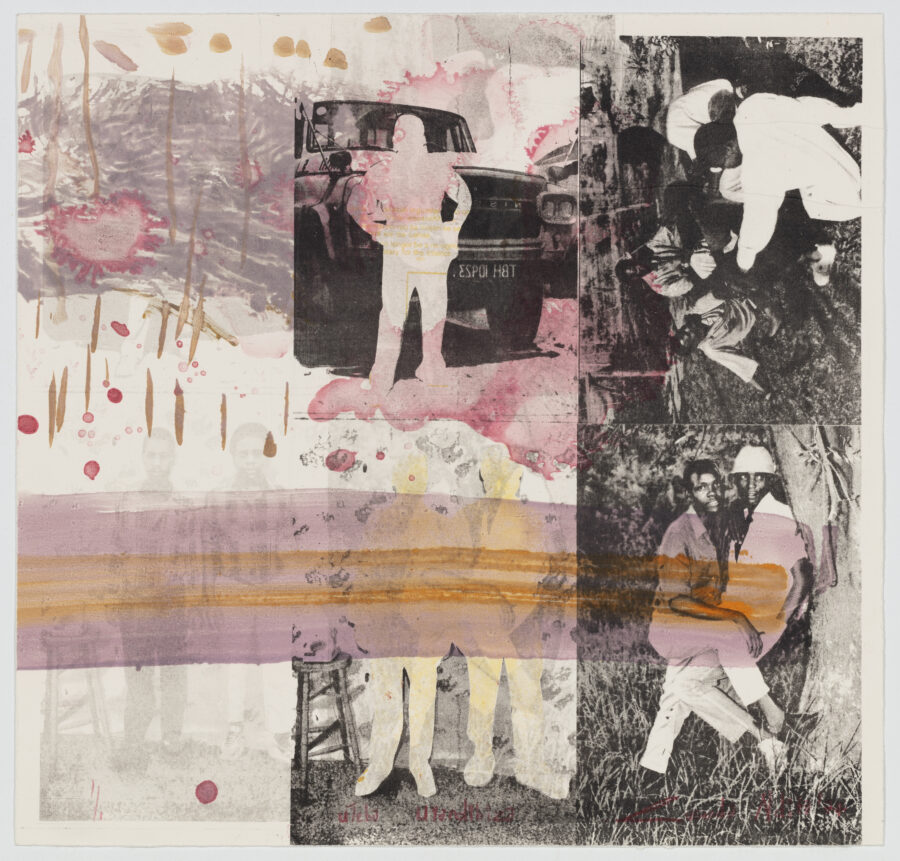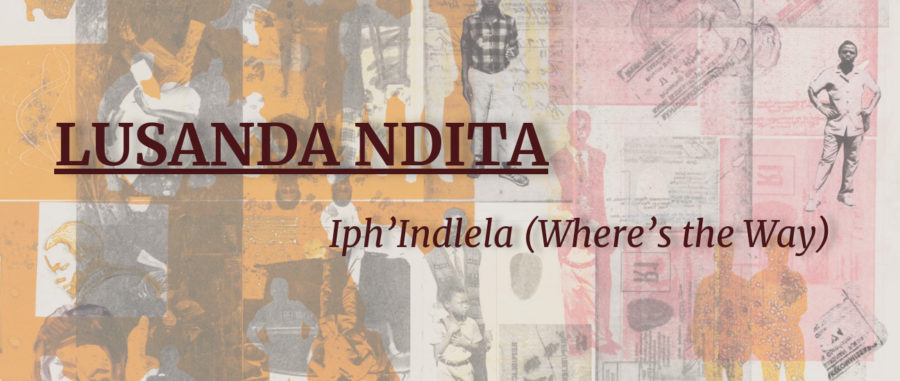South African artist, Lusanda Ndita’s work interrogates the archetypal family structure and its relations to society, one’s manhood and historical ties. His images examine the interplay of presence juxtaposed by absence as a way to represent the position of male role models.
Through the use of domestic archive materials passed onto him by his mother, such as family photo albums and identification documents, Ndita attempts to bridge the gaps in his own identity and associations to manhood via deconstructing images of missing father figures and creating a silhouette to reflect their identity, or lack thereof. These are often presented in various layers, most notably miner’s ledgers, dompass identity documents and work permits.
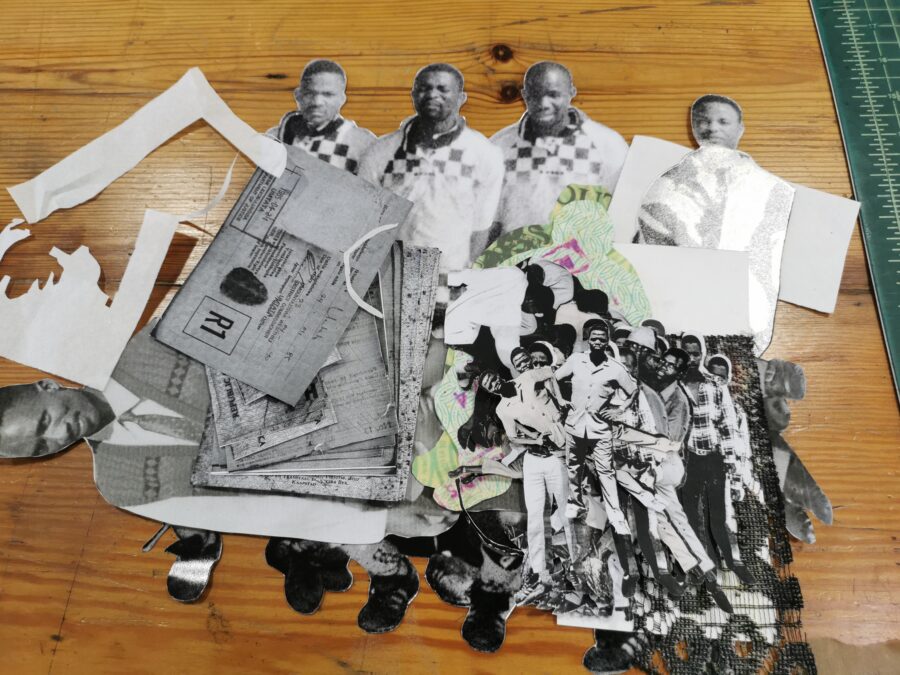
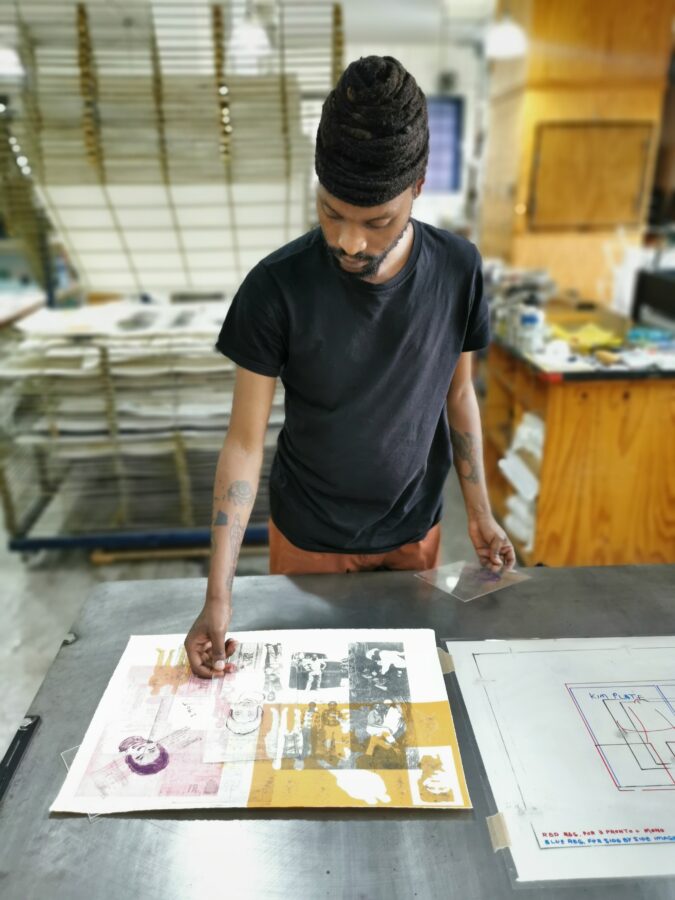


These tangible remnants of the past serve as both relics and catalysts for Ndita’s creative process, offering a pathway to understanding and representing his subject matter. By deconstructing images of absent male figures, Ndita aims to piece together the fragmented narrative that many people share due to the effects of South Africa’s turbulent history.
It is worth mentioning that every colour used in the making of Ndita’s works is a derivative of the colour red. In Ndita’s work, red is a metaphor for the Xhosa process of ‘becoming’ and transitioning from a state of boyhood to manhood. As a rite of passage, a boy goes to entabani and to smear with imbola (red soil) for a period of time before ascending to manhood.
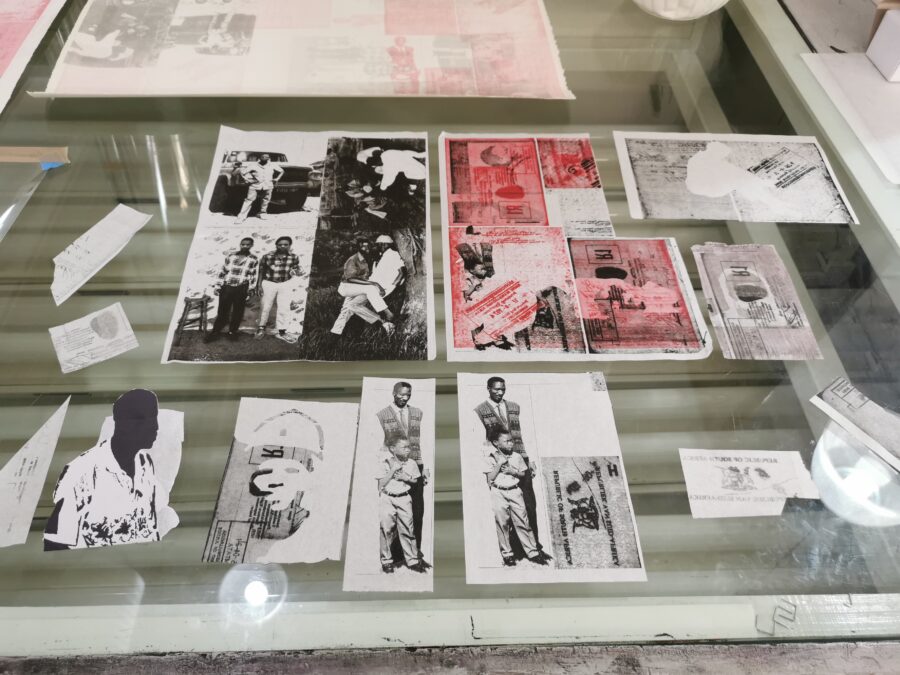
Layers upon layers are put into Ndita’s work. In this case, Ndita worked with DKW printmaker Sbongiseni Khulu in creating collages of thin traditional Japanese papers (Tosa washi) and pronto lithography pieces with elements such as miners’ ledgers, dompass, and work permits which hold historical and personal significance.
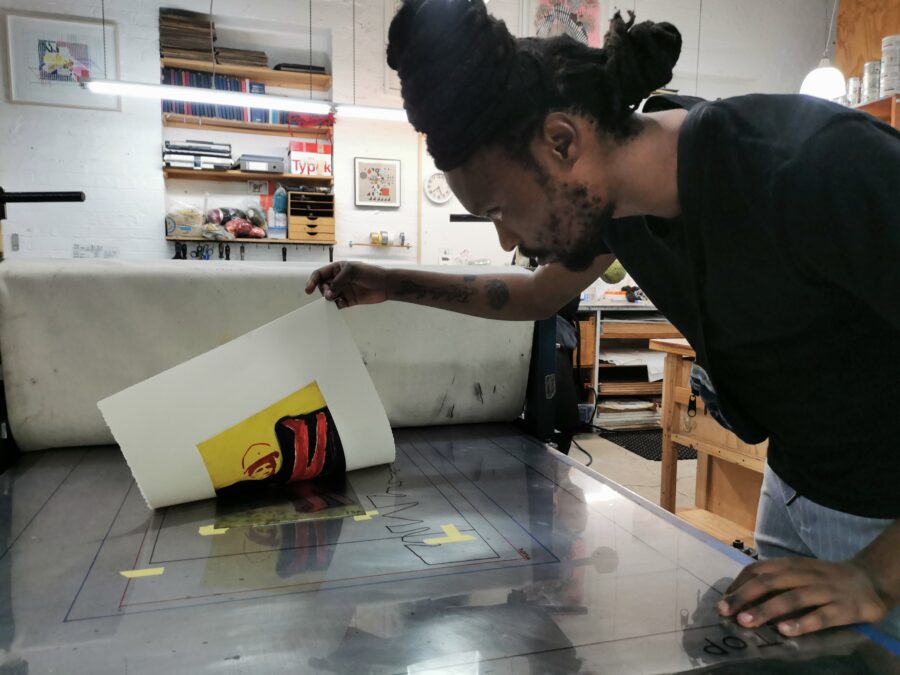
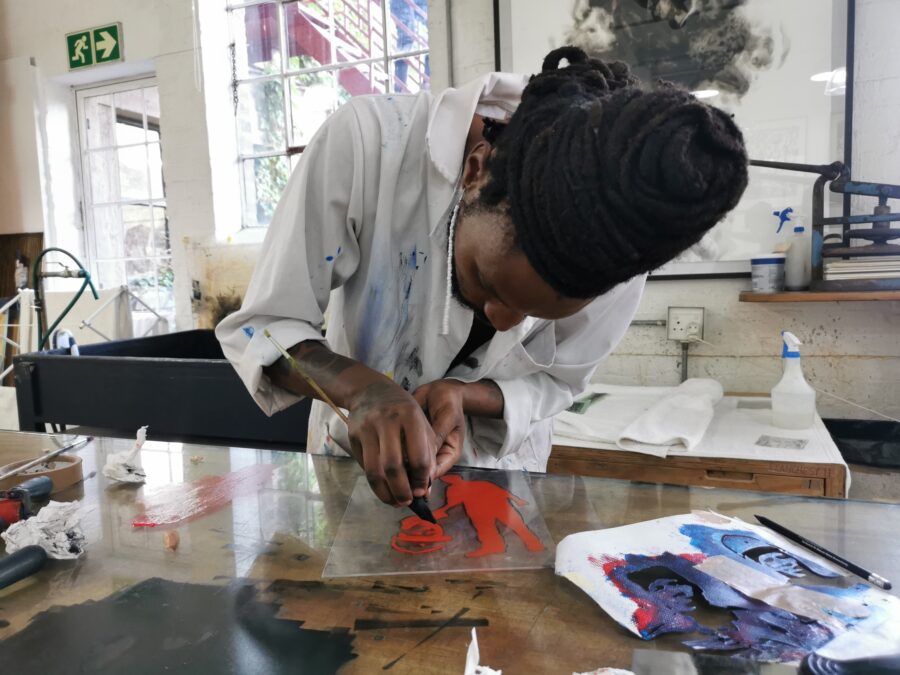
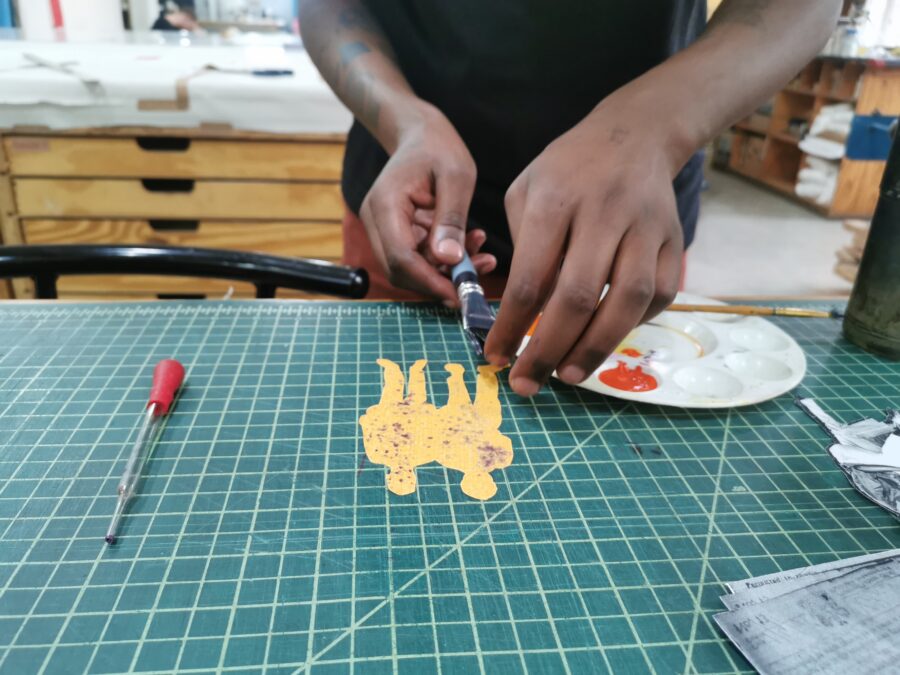
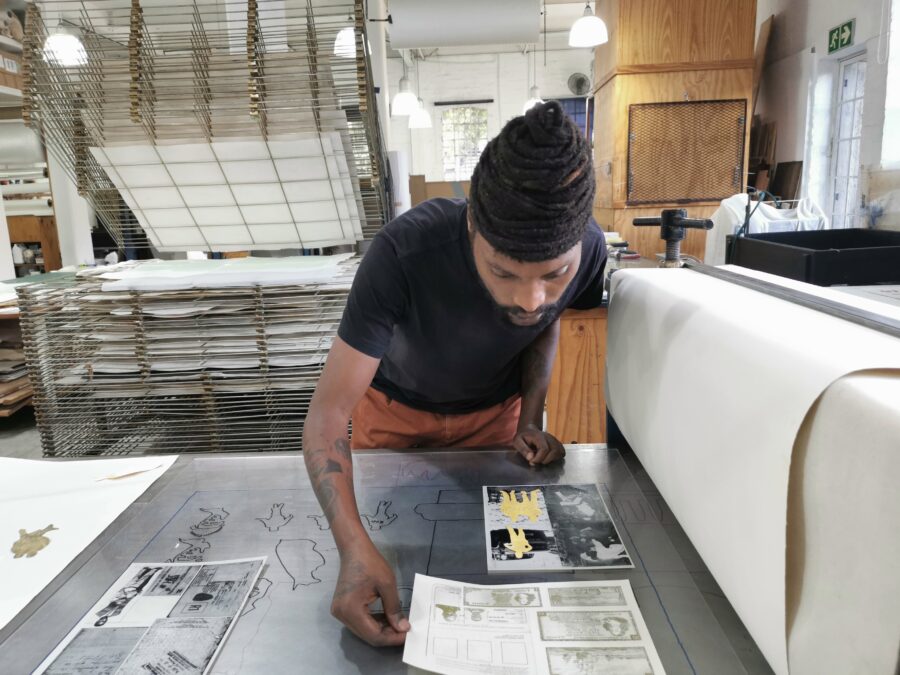
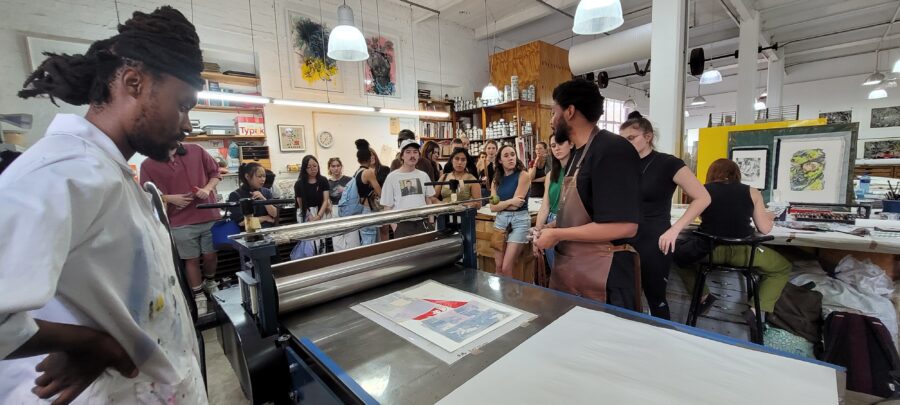
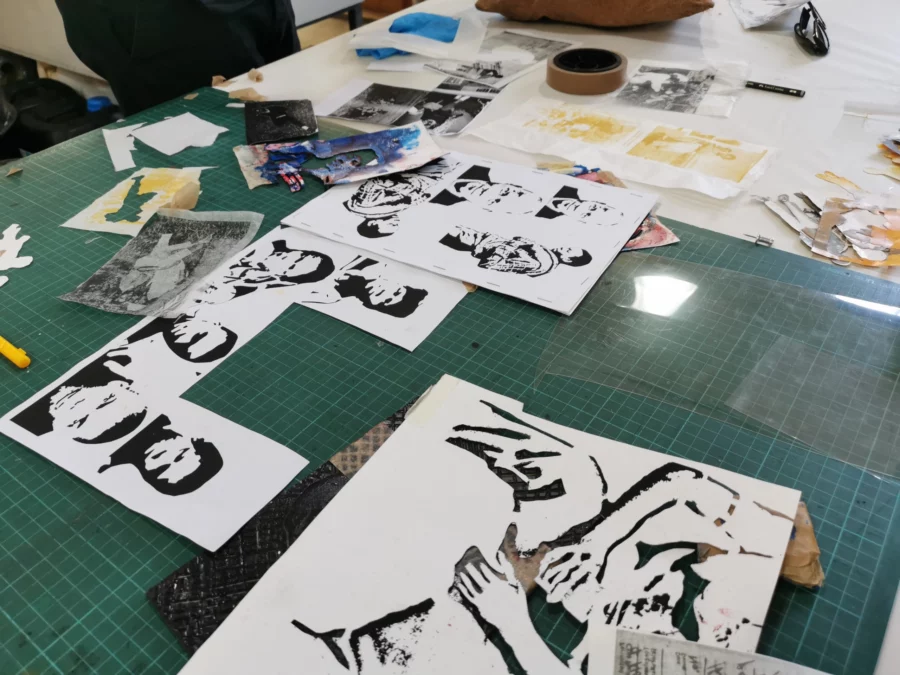
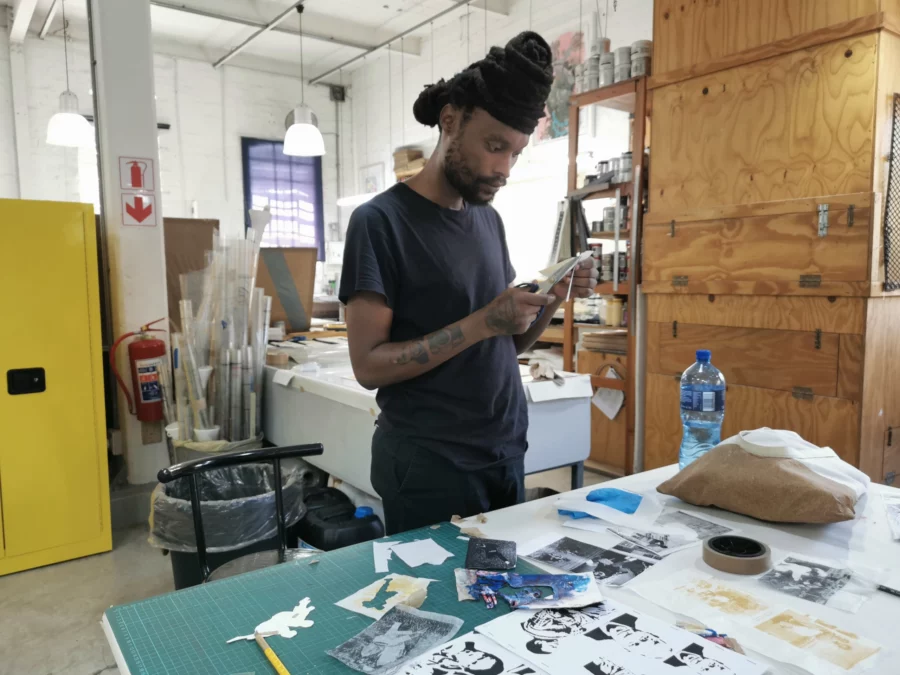


During the apartheid regime, the dompass (the ‘dumb’ pass) system was a prominent tool in the government’s policy of racial segregation and control. Originating in the late 19th century, these pass laws required black South Africans to carry identification documents (passes) at all times. These documents not only regulated the movement of black individuals but also served as a tool for enforcing labor exploitation and segregation. Ndita’s use of miners’ ledgers and work permits adds another layer of complexity as these documents expose the economic exploitation faced by black South Africans during Apartheid.
In Ndita’s work, the inclusion of the dompass is an insightful visual strategy, reflecting the enduring impact of apartheid on personal and collective identity. By incorporating these historical artefacts into his imagery, Ndita confronts the viewer with the harsh realities of South Africa’s past and how it has affected communities, families and individual experiences at a grassroot level.
Through layers of symbolism and visual storytelling, Ndita invites viewers to contemplate the interconnectedness of past and present, memory and identity.
